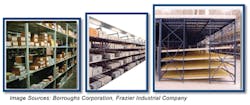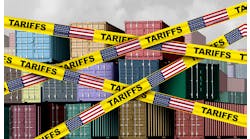Many dismiss "omni-channel commerce" as just a new way of describing the "multi-channel" commerce that's been around for over a decade. But there is a distinct difference. "Multi-channel commerce" generally refers to the multiple ways a consumer can make a purchase, i.e., mobile Internet devices, smart phones, computers, brick-and-mortar stores, television and catalog, etc. In "omni-channel commerce," the consumer can experience the brand across multiple channels within a single transaction.
According to IDC Retail Insights, while the multi-channel shopper spends, on average, 15% to 30% more with a retailer than someone who uses only one channel, omni-channel shoppers will spend 15% to 30% more than multi-channel consumers.
Fully leveraging the benefits of omni-channel commerce, in many cases, can require significant investment in systems that enable company-wide inventory visibility and inter-departmental logistics coordination such as advanced point-of-sale (POS) systems, distributed order management and inventory management—not to mention a potential restructuring of the logistics network.
Companies are turning to their distribution centers to bridge a gap. Those that can adapt to efficiently fulfilling the higher number of smaller, more frequent orders that omni-channel commerce requires, while still meeting the demands of the traditional retail environment, will win.
The crux of the omni-channel challenge is that the distribution capabilities required for such an environment represent a significant departure from the distribution capabilities required to support the traditional retail model. The transition from case and pallet picking can be a painful one.
We've identified ten key tactics that successful companies are employing to efficiently support omni-channel commerce in the distribution center:
1: Create a Forward Pick Area
The goal of a forward pick area is to increase SKU-density per linear-foot, and allow multiple picks to be performed with a minimal amount of travel. Without a forward pick area, where unit picking is done from broken cases, a picker would need to travel 32 feet to be able to pick eight SKUs. By storing SKUs in carton flow rack, approximately four cartons of each SKU can be stored in a single lane (assuming a 12" square carton and 48" deep carton-flow). If the carton-flow is configured eight lanes wide by four lanes tall, then approximately 32 SKUs can be stored in eight lineal feet of aisle. This is a 16-fold increase in SKU density. Rather than walking 32 feet, the same eight SKUs can be picked by walking eight feet.
2: Set Up Effective Replenishment
Eventually, the supply of goods in the forward pick area will be exhausted. Effective rules must be set up for controlled replenishment. Types of Replenishment include: visual replenishment (replenishment workers conduct a visual survey of each bin, and replenish the ones getting empty); min/max replenishment (using the WMS or inventory control system to trigger a replenishment); demand-based replenishment (proactively looks at SKU demand for a given day or shift, and triggers a replenishment for SKUs with extra-heavy demand); hot replenishment (pickers can trigger an automatic replenishment of shorted SKUs); top-off replenishment (bins can be proactively "topped off" to their maximum levels to get ahead of schedule).
3: Determine Overall Pick Strategy
It is advisable to perform some long range planning and have some sense of what strategy will be needed once volumes increase. There are three fundamental pick strategies: vehicle-based picking (using electric pallet-jacks for floor-level picking, "man-up" order-pickers for multi-level picking and manual carts for picking low-cube items to discrete orders); conveyor-based systems (for large distribution centers with multiple pick zones covering long distances to a shipping area); and goods-to-picker systems (including vertical and horizontal carousels, vertical lift modules, automated storage & retrieval systems and robotic picking systems).
4: Determine Optimal Pick Methodology Discrete Order Picking
One order at a time is picked, start-to-finish, by one picker. Without a WMS system, this may be the only method of picking that can be practically executed in some distribution centers.
Cluster Picking
Multiple orders at a time are picked, start-to-finish, by one picker. As the orders are picked, they are placed in discrete, separate containers.
Zone Picking
Multiple pickers select separate portions of the same order. This method is often deployed in conjunction with cluster picking, where multiple pickers each pick separate parts of multiple orders at the same time.
Batch Picking
Batch picking involves picking the entire quantity of a SKU which is required for multiple orders, and then sorting it to those individual orders in a secondary process. Batch picking works best in a "few-to-many" environment, when there are a small number of very fast moving SKUs which are required for a large number of orders.
5: Practice Real-Time Warehousing
As the complexity of a company's pick methodology increases, the need for a real-time warehousing system to direct and confirm the execution of these picks becomes more and more important. Wireless, mobile devices are the backbone of a WMS system. These devices generally feature a small computer screen where workers receive instructions, a bar-code scanner where workers can confirm that they have properly executed those instructions, and an alphanumeric keypad to enter additional pieces of information.
Properly implementing a WMS system can take a year or more. For very simple operations without a lot of process complexity, that can be shortened to as little as two months. More companies are offering WMS in the Software-as-a-Service (SaaS) model which can facilitate shorter implementation times as well.
6: Optimize Packing
Perhaps the biggest area of inefficiency that still remains when distribution centers convert to higher levels of e-commerce lies in the packing operation. Packing requirements often creep up over time, and since the evolution is gradual, companies often initially address the needs with manual processes that simply proliferate as volumes increase.
There are four levels of packing automation which companies often go through in their evolution: manual packing (characterized by large pack stations staffed by workers performing all packing and shipping functions themselves); specialized packing (enabling a simple division of labor into two basic roles: (a) packer and (b) manifesting clerk); semi-automated packing (reducing a number of the packing steps by utilizing a "pick to shipping container" process); and fully automated packing (This involves case sealers, in-motion weigh scales and sortation technology).
7: Manage Parcel Shipments Effectively
The choice of parcel carriers in the United States is generally limited to two main providers: UPS and FedEx, with some shipment profiles also lending themselves well to the United States Postal Service (USPS). We recommend that shippers divide their shipments between UPS and FedEx, rather than giving one carrier all of the business. This forces both carriers to constantly be "on their toes" to offer competitive discounts, and allows shippers to determine the best carrier for each parcel on a shipment-by-shipment basis.
8: Pick-to-Shipping-Container
This can greatly reduce handling requirements in the packing area, but there are several pre-requisites:
• Accurate product dimensions and weight must exist.
• Scan-verification at time of picking must take place.
• A cartonization system must be used to calculate the correct size shipping container.
• A capable WMS system must be in use.
Automatic cubing devices can ascertain the dimensions of an item. An operator places the item on the cubing device, presses a button, and within seconds, the length, width, height, and weight of the item are captured. An SKU number is entered (or scanned from a bar code), and the information is recorded in a database.
9: Employ Goods-to-Picker Systems
If piece-pick requirements increase to a certain level, then goods-to-picker systems may make sense as a means of reducing pick labor (and improving space utilization). While good cart-based systems can produce pick rates of between 100 and 200 lines per hour, goods-to-picker systems have been known to allow rates of 400 – 600 lines per hour.
Some of the major forms of goods-to-picker systems include horizontal carousels (for very high pick rates; creative use of mezzanines and lift tables can extend the working height of these systems and make better use of the cube; vertical carousels (without the same high pick rates as their horizontal cousins, excel when space utilization is the dominant design factor); vertical lift modules (accept items of varying sizes and heights, but are not quite as space efficient as vertical carousels); automated storage and retrieval systems (AS/RS) (pallet-handling and case handling systems where an extractor device retrieves a load and brings it to an operator for picking); and robotic picking systems (Kiva's army of transporters which move sections of shelving to a picker who works from a fixed location; pick rates are comparable to those of horizontal carousels or AS/RS systems, but the big advantage of this system is flexibility).
10: Improve Wave Management
The aforementioned forms of material handling automation can create large pick waves. Rather than accessing the same pick face several hundred times to pick a fast moving item, the entire supply of that item may be picked at one time and then separated by order using either a manual put-to-store process, or automated unit sortation technology such as a tilt-tray, cross belt, or bomb-bay sorters. These processes and technologies can contribute to ultra-high pick rates, but can sometimes create an unintended consequence.
Cluster picking and batch picking work best when a large pool of orders is built and combined into a pick wave. These large waves can take a long time to pick – sometimes several hours. This can have an impact on a company's order cutoff time –the latest time a consumer can place an order and expect it to ship the same day it is placed.
In recent years, advances in wave management have allowed for the ability to dynamically insert high-priority orders into a large wave without having to wait for wave completion. This is sometimes referred to as "wave-less" picking, since the traditional concept of a pick wave is altered considerably with this approach. With this concept, the benefits of picking in large waves – grouping similar orders together and picking SKUs in bulk – are still preserved. However, a much greater level of flexibility is available to allow orders to be prioritized on the fly without waiting for a wave to complete. This concept has been largely pioneered by developers of warehouse control software (WCS), which acts as middleware between a WMS and the machine-level controls of the material handling system.
Ian Hobkirk is the founder and managing director of Commonwealth Supply Chain Advisors (www.commonwealth-sca.com).




